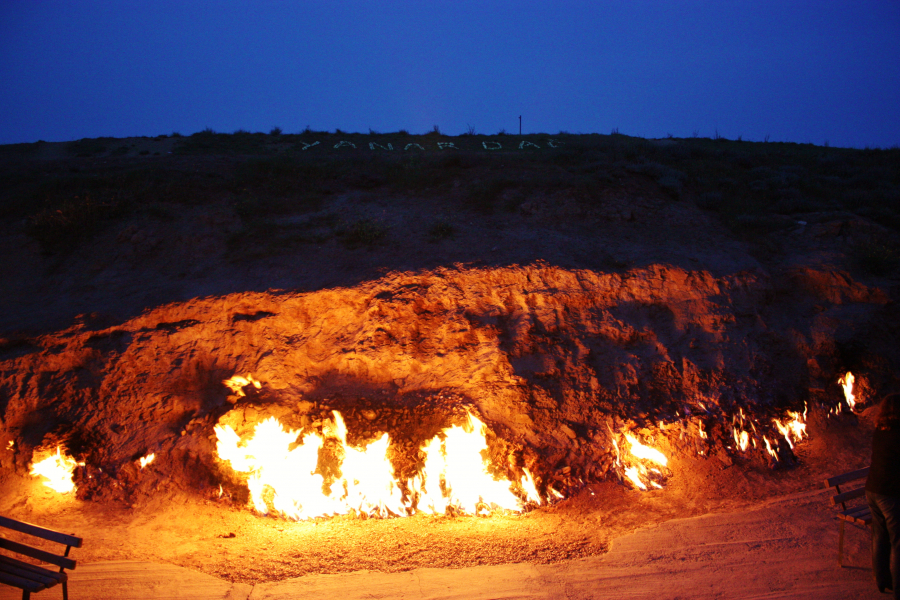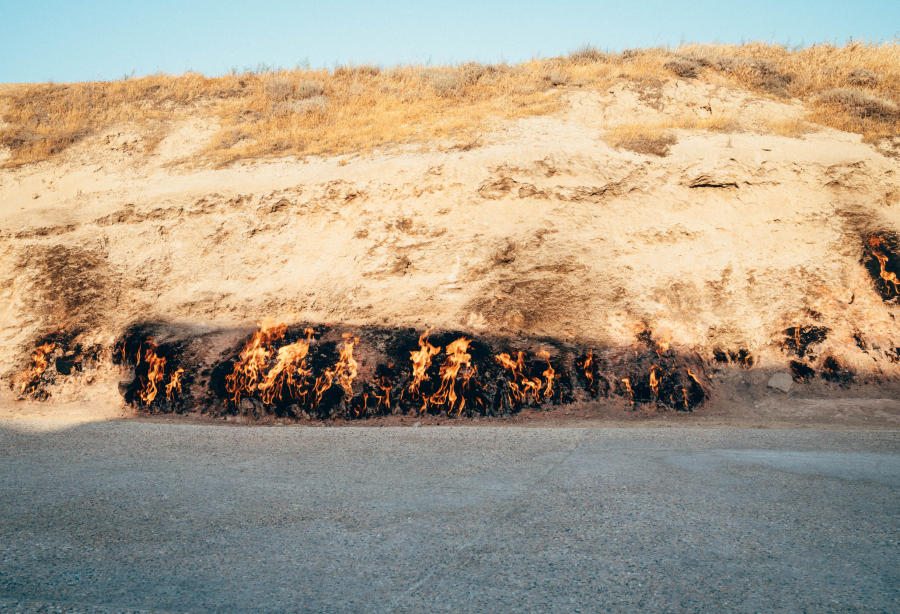Located on the Absheron Peninsula near the capital of Baku, Azerbaijan, Yanar Dag is often called the "burning mountain" because its wall of fire has been burning for 4,000 years and shows no signs of stopping regardless of the weather. The reason is that the country's natural gas reserves are so abundant that they sometimes leak to the surface.

Such fires used to be common in Azerbaijan. However, due to the development of natural gas for domestic and industrial purposes, most of them have been extinguished. The fire on Yanar Dag is one of the few remaining, and perhaps the most impressive.
Fire worship custom
The name Azerbaijan means “fire” in Persian. Since ancient times, the people here have practiced fire worship and built temples around eternal fires that burn thanks to underground natural gas.

Many people here follow the ancient Zoroastrian religion, which originated in Iran and flourished in Azerbaijan in the first millennium BC. This religion believes that fire is a link between humans and the supernatural world, a means to understand the spiritual world and gain wisdom. Fire can purify, sustain life and is an important part of worship.
Ateshgah Fire Temple
For a deeper look into Azerbaijan’s history of fire worship, visit the Ateshgah fire temple in eastern Baku. The temple is a pentagonal complex built in the 17th-18th centuries by Indian settlers in Baku.

The name Ateshgah comes from Persian and means “house of fire.” The centerpiece of the area is a mosque built over a natural gas vent, which has a continuously burning fire. In fact, the fire has been extinguished since 1969. Today, it burns off Baku’s main gas supply and is only lit for tourists.
The temple has been in use as a place of worship since the late 19th century. Since 1975, it has been a museum and was nominated as a UNESCO World Heritage Site in 1998. The Ateshgah fire temple is estimated to receive around 15,000 visitors each year.


































